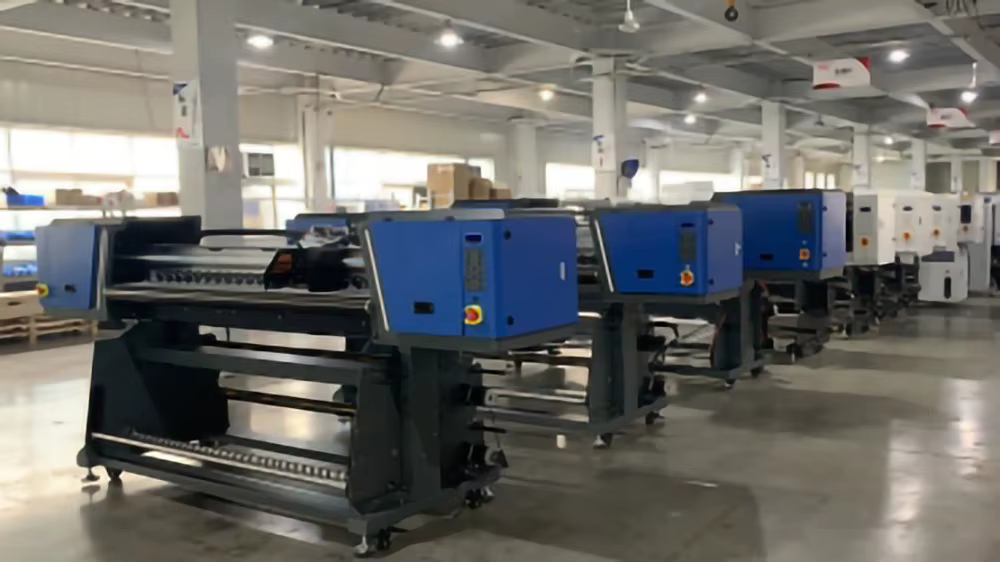September
General
How DTF Printing Works: Step-by-Step Explainer
11 September 2025
|
3 Min. To Read
Direct-to-Film (DTF) printing has emerged as a revolutionary force in textile and garment decoration. In contrast to older techniques like screen printing or sublimation, DTF is a flexible, budget-friendly, and long-lasting way of printing designs on almost any type of fabric. As a small business, print shop, or mass production unit, knowing the step-by-step process of how DTF printing works can enable you to achieve maximum quality and efficiency.
At prolificgeeks, we simplify technology for our customers. In this blog, we will demystify the DTF printing process into simple steps from film creation to pressing, with a glimpse into how equipment such as an Automatic heat press in India plays a role.
Step 1: Film Creation – Designing and Printing the Transfer
The DTF printing process starts with digital design creation. With the help of graphic design software, you create the artwork and ensure that it meets the proper resolution and color accuracy.
When ready, the design is printed on a PET transfer film. Unlike standard paper, PET films are built to handle heat and pressure without releasing inks from their confines. DTF printers, which are specialized, utilize CMYK inks and white ink to achieve bright and opaque prints on light and dark material.
This is an important phase, as the quality of the film print will, in turn, determine the brightness and clarity of the final transfer. We stress the use of high-quality films at prolificgeeks to ensure less smudging and bleeding of colors.
Step 2: Powdering – Applying the Adhesive Layer
Following the printing of the design onto the film, powdering is the second step. It entails coating the printed face of the film using a fine, hot-melt adhesive powder when the ink is wet.
The powder adheres only to the inked areas, forming an adhesive layer that will ultimately cause the design to stick to the fabric. To create an even coat, experts usually use a powered powder-shaking machine. This mechanization enhances consistency and minimizes manual labor.
Powdering plays a crucial role in determining the extent to which the design will stick to the garment when it's pressed. A well-powdered film guarantees longevity and resists peeling or cracking over time.
Step 3: Curing – Preparing the Transfer for Pressing
After applying the powder, it must be cured (or melted) to engage its adhesive characteristics. It is referred to as curing, and generally, a curing oven or heat press without pressure is used.
Curing softens the adhesive powder a little, forming an adhesive surface that is now ready to bond with fabric during pressing. Attention should be given to curing at the correct heat and time, insufficient heat will result in poor adhesion, while too much heat can destroy the design.
At prolificgeeks, we advise using calibrated curing equipment to achieve consistent results. This ensures the adhesive powder is precisely set, so the transfer is strong and professional-grade.
Step 4: Pressing – Applying the Design onto Fabric
Here is the most awaited part of the DTF process, applying the design to the garment.
The cured film is laid face down on the fabric, and an Automatic heat press in India is employed to apply the design. The heat press applies temperature and pressure such that the ink and glue blend perfectly with the fabric fibres.
Automatic heat presses are particularly useful in India's developing printing industry because they provide:
- Uniform pressure and heat for perfect transfers
- Increased productivity with very little manual labour
- Increased precision over manual presses
Once pressed, the film is permitted to cool a bit before peeling it back, producing a clean, rich-looking design tightly adhered to the fabric.
Why Choose DTF Printing?
DTF printing is now the go-to for businesses and designers due to its versatility and efficiency. Some of its main benefits are listed below:
Prints on all fabrics: Sublimation has its limitations when it comes to polyester, but DTF can print on cotton, blends, polyester, and more.
Strength: Proper powdering and curing make designs last through multiple washes without peeling or fading.
Cost-effective for small runs: You do not require costly setups such as screen printing, which makes it perfect for custom orders and small batches.
High-quality output: Sharp, vivid colours and precise details can be produced with ease.
Prolificgeeks: Making DTF Printing Easy for You
At prolificgeeks, we are committed to taking innovative printing solutions to Indian businesses. Whether you need dependable Automatic heat press machines in India or insight into DTF printing, we're here to assist you.
Our solutions are made to make the film creation, powdering, curing, and pressing process effortless, efficient, and profitable for your printing firm.





.png)
.png)
.png)